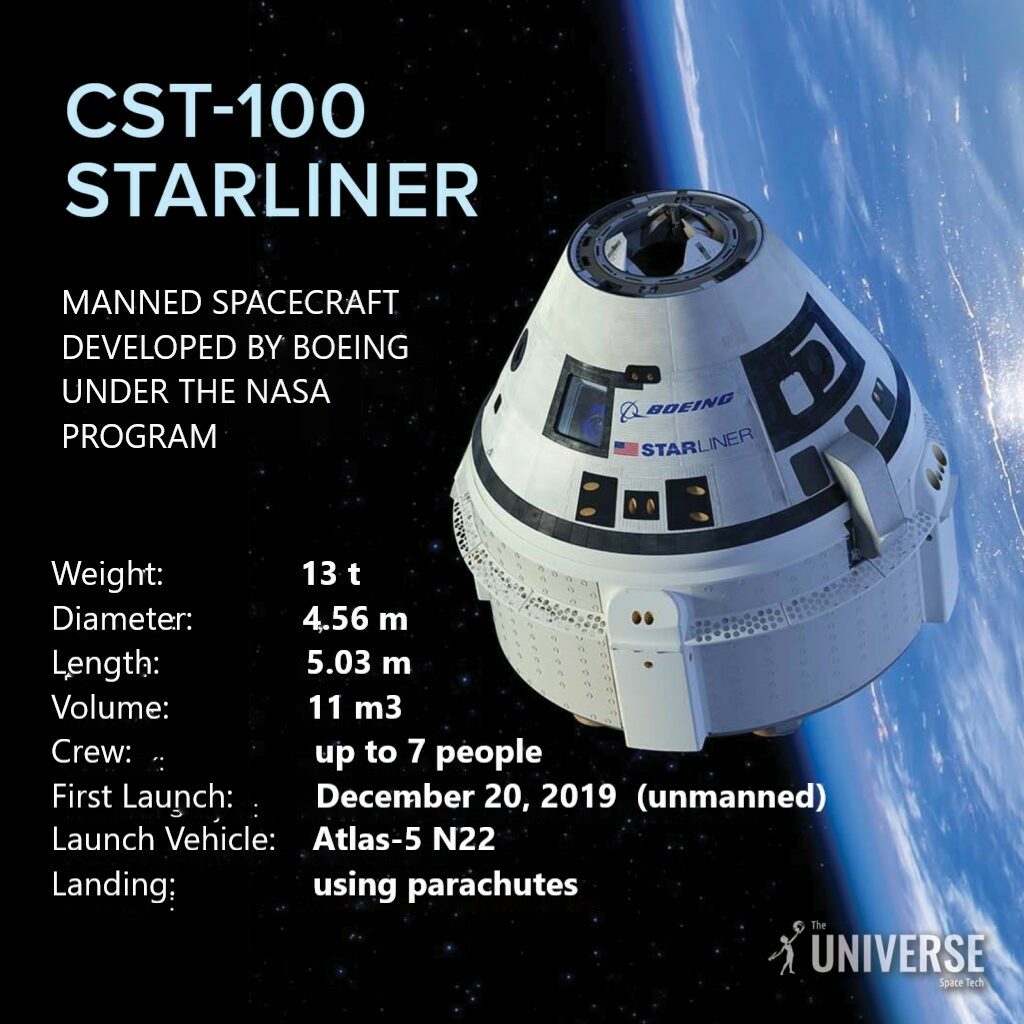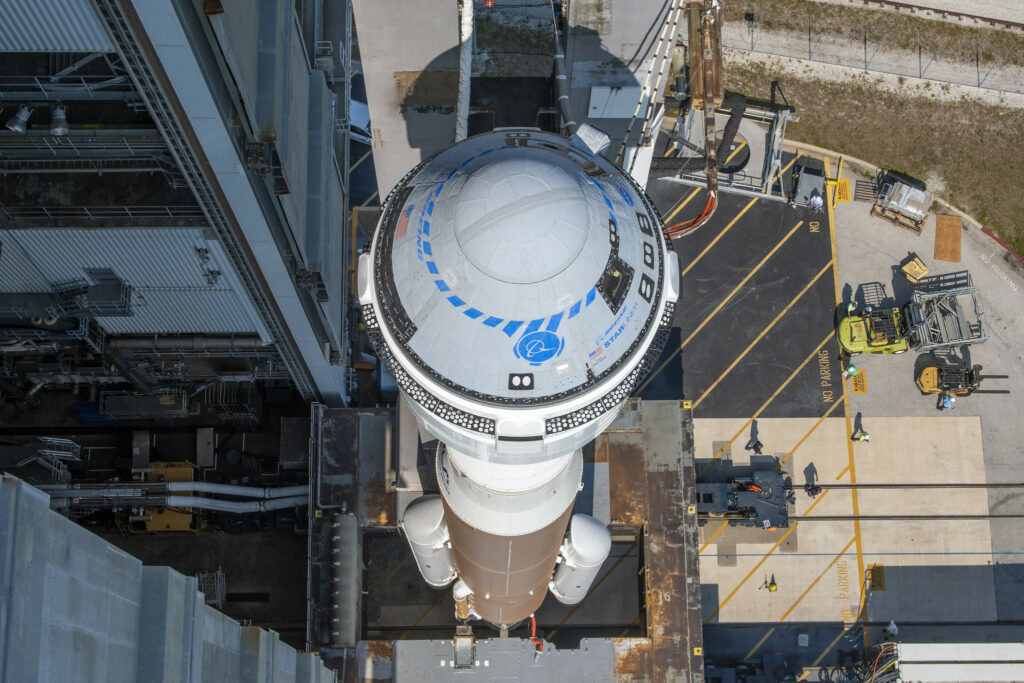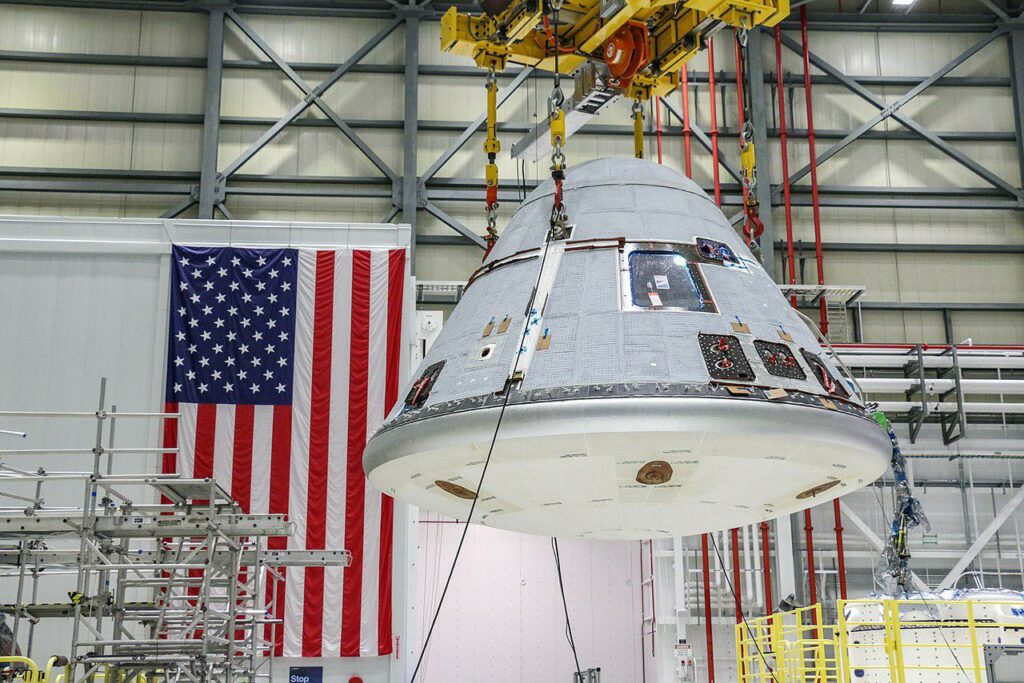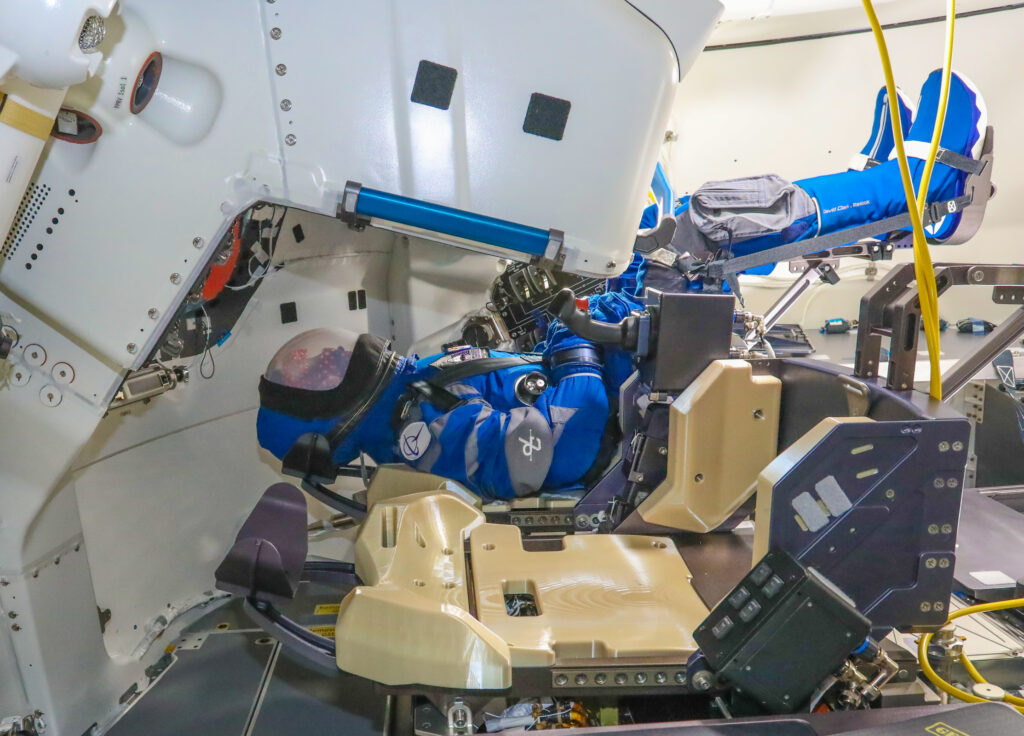NASA and launch operator ULA specialists successfully installed the Atlas V rocket with the Boeing-built CST-100 Starliner spacecraft on the LC-41 launch pad. Its launch will take place on May 20 at 01:54 a.m. Kyiv time.
Main Characteristics of the Starliner
The CST-100 Starliner was developed by Boeing under a NASA contract issued under the CCP program. Its goal is to create private manned spacecraft designed to deliver astronauts to the ISS. The second contract for this program went to SpaceX, which built the Crew Dragon spacecraft.

The height of the Starliner is 5.03 meters, the diameter is 4.56 meters, the weight (when refueled) is 13 tons, and the volume of the internal space is 11 m2. In theory, the Starliner is capable of carrying up to seven people, but on missions to the ISS its crew will be limited to four astronauts. The landing of the spacecraft is carried out by parachutes on land. A rather important feature of the device is that it can be used to raise the altitude of the ISS orbit. This option may be useful to NASA after Russia leaves the station.
Starliner Technical Problems
Starliner is a rather problematic spacecraft. Initially, the speed of its development did not lag far behind the speed of development of Crew Dragon. The first unmanned test of the Starliner took place back in December 2019. But due to the incorrect operation of the propulsion system, the spacecraft did not have enough fuel to dock with the ISS, which led to the disruption of the test program. As a result, Boeing had to make a decision to carry out another unmanned launch. After numerous postponements, it was scheduled for August 2021.

However, this time the spacecraft did not even take off. During the pre-launch check, it turned out that the valves responsible for supplying fuel to the orbital engines did not open at the Starliner. This was due to the leakage of diazote tetroxide (used as an oxidizer). It reacted with the moisture trapped inside the craft, forming nitric acid, which damaged the valves.
The damage was so severe that the Boeing management had no other solution but to completely replace the service module of the spacecraft. It took a long time.
Decisive flight of the Starliner
Given the history of the numerous technical problems and postponements described above, the test scheduled for tomorrow may play a key role in the future history of the Starliner. Success will finally open the way for Starliner to its first manned flight. Failure will raise a legitimate question about the future prospects of the spacecraft and its fundamental suitability for flights.

If everything goes according to plan, after the launch, the Starliner will spend a day in a state of autonomous flight. Then the spacecraft will dock with the ISS. It will deliver about 360 kg of various supplies to the station. Instead of astronauts, a mannequin named Rosie the Rocketeer will be on board the Starliner, on which 15 sensors are fixed. Their information will allow assessing what overloads the crew of the spacecraft would experience during the flight.
In total, the Starliner will spend 5 to 10 days in orbit. After undocking from the ISS, the spacecraft will land at the White Sands test site in New Mexico. Together with the mannequin, it will return about 250 kg of cargo to Earth.

The next flight of the spacecraft has so far been scheduled for the end of 2022. Within its framework, Starliner will deliver three NASA astronauts to the ISS, who will spend 2 to 4 months on board the station.
Live broadcast of the Starliner launch
Link to the live broadcast of the Starliner launch.
Follow us on Twitter to get the most interesting space news in time
https://twitter.com/ust_magazine

